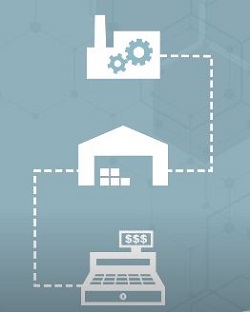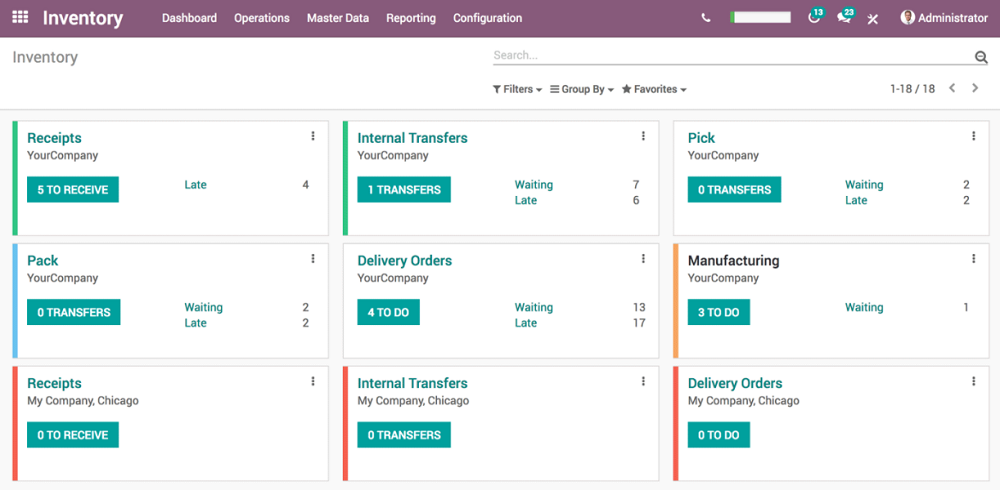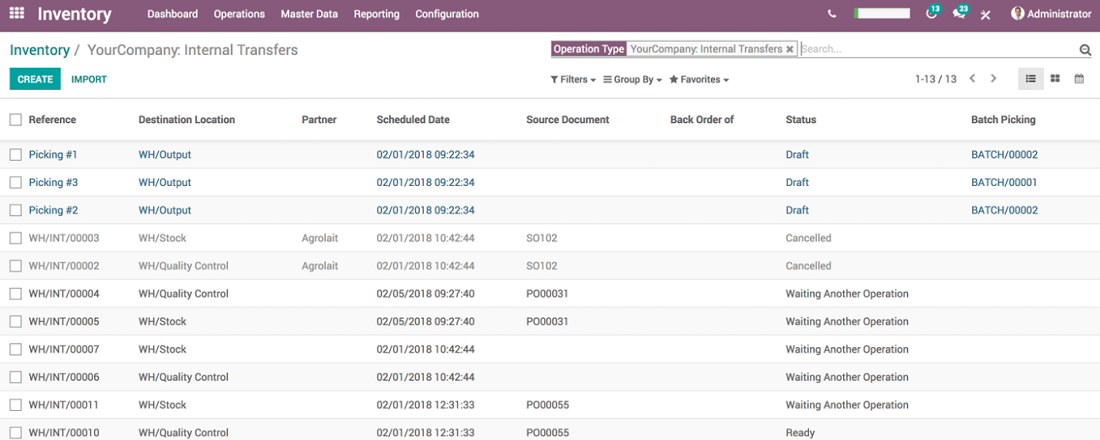Related Articles
Inventory control and management involves the procurement, storage, and distribution of a company’s physical and tangible products.
Inventory control, on the other hand, is a method of regulating a company’s inventory on hand and in its warehouse.
If you or your organization is involved with any type of manufacturing, then you will agree that inventory control and management are both critical business functions, regardless of what industry you are involved with.
Mismanagement of inventory can spell disaster for your bottom line and your resources. Sales can end up unfulfilled, and time and resources can be spent due to having too much (or too little) stock. So, Inventory control and management are important to increase your business.
Why is Inventory Control Important?
Inventory control, as its name implies, controls the inventory that is already on hand at a distributor’s warehouse.
This includes knowing what products are in stock and how much of a particular product a distributor has on hand and ready to ship. It also deals with knowing where each product can be found in the warehouse, ensuring that they are in perfect working condition, and plotting the warehouse’s layout that minimizes the cost of fulfilling client orders.
Why is Inventory Management Important?
Efficient inventory management is one of the things that affect each and every aspect of your business – that’s why it is so important, after all.
Forecasting and product replenishment are activities involved with inventory management. It is what helps companies determine when to order which products and how many of them to order, as well as determining the best supplier for every item in their respective warehouses.
Proper inventory management ensures that distributors always have the right amount of the right product in the right place at the right time.

Enterprise Resource Planning (ERP) Software and Inventory Control And Management
From your ability to fulfill orders on time and on target, to managing your warehousing overhead, and to controlling your existing inventory, it is abundantly clear from the get-go that inventory control and management both have huge implications for your business.
Here’s the thing: undertaking the tasks that comprise both is tedious and inefficient when you do it the old school way – by hand. And, if you make a mistake, as manual processes tend to lead to human errors, it can have a domino effect that will pose far-ranging consequences. Consequences that will negatively set back your business for days, months, or even years.

How do ERP systems improve inventory control and management?
The main goal of ERP inventory control and inventory management systems are to minimize overhead by providing key information and alerts as to when it’s time to replenish, restock, or reproduce products.
An effective ERP inventory management system reduces overhead and increases operational productivity and efficiency by addressing several common problems related to a company’s inventory.
That said, how do enterprise resource planning (ERP) systems help companies manage their inventory and control it?
Hint: using the right technology is part of the solution, but it doesn’t start and end just there.
See, a smart approach to controlling your inventory doesn’t necessarily have to mean buying all the bells and whistles on an exorbitantly-priced ERP system. It is but one part of the process.
What we recommend is for you to sit down and think about which processes create waste due to siloed systems or do to highly manual inventory control processes.
Apart from determining which parts of the processes create unnecessary waste, you will also have to consider how the channels of downstream and upstream communication flow, and look for action items for improvement.
In short, what we’re saying is that a thorough review of your company’s business processes will reveal the gaps in your operational processes as it happens in its current state.
It’s easy to underestimate the power of creating and setting reasonable goals for performance improvement that are tangible and measurable after the implementation of your chosen ERP system. But it is an absolutely crucial part of the process.
So, how do you begin on your way to better inventory control and management?
We suggest to capture your organization’s key performance indicators as you analyze the current state of your company’s processes. Then, you’ll want to compare the data with a fresh set of key performance indicators after using your chosen ERP solution for some time.
Let’s take a look at some of the key improvement areas for inventory control with ERP solutions.
- Data entry and processing improvement methods. Consider replacing manual data entry processes with modern barcode scanning and other devices that reduce data entry errors, improve collection of data, get timely and accurate information to the right people at the right time, and consolidate all warehouse data in one ERP solution.
- Real-time, organization-wide reporting. Your organization is only as good as its data is. ERP systems help your organization gain the ability to access work orders, purchase orders, inventory information, and sales in real-time – seamlessly consolidating information between the ERP solution and your warehouses as your company performs BAU activities.
- Seamless integration. The desired effect of most ERP users is to gain improved operational efficiency that leads to more productivity, sales, and revenue. Integrating your ERP is critical in achieving this desired state. For instance, business process improvements need to integrate data exchange between the ERP and your warehouses for accurate and timely invoicing data, as well as payment of purchase orders and inventory control and management, all without the tedium of manual processing.
It goes without saying that the right ERP solution goes a long way for companies seeking to gain a real-time snapshot of their inventory. Whether managing stock levels, warehouse locations, or inventory activities, management can gain a keen insight of how their inventory is performing in mere seconds.
Plus, with automation tools, your company can improve the operational efficiency of its warehouses across BAU activities.
These are what will help you make the right decisions regarding your inventory, its control, and its management in general.
Let’s take a look at the most common inventory problems that a proper ERP inventory management and inventory control solution will help fix for you.

Common Inventory Challenges That ERP Inventory Control and Management Systems Help Solve
We already know how improper inventory control and management can be detrimental – or downright disastrous – for a business. Fortunately, the most frequent inventory problems can be solved by implementing an ERP solution that automates manual processes and consolidates your supply chain for you.
The lack of an ERP system to manage and control your inventory can lead to the following problems.
1. An Excess of Inventory
If your company is involved in the manufacturing of products that may be seasonal, excess inventory is something you’ll want to avoid like COVID-19. An excess of inventory increases overhead while simultaneously reducing liquidity. On the other hand, an extremely conservative forecast may lead to a shortage of inventory. ERP inventory systems can help leverage and analyze your historical sales data and seasonal trends to create realistic minimum inventory levels.
2. Running Out of Inventory
A shortage is just as bad as an excess of inventory. It’s just as costly as the latter, too. If your profit margin is high and your warehouse space is limited, the lack of inventory during peak seasons can be detrimental to your company’s performance just the same. ERP inventory solutions allow you to set minimum inventory thresholds for each of your products, and are easily changeable anytime. If inventory for a product falls below the minimum threshold, an alert can be programmed to be sent to order more of it.
Combined with the right software for process automation, an ERP inventory system can also automate the purchase request and send it out on its own.
3. Inventory turnover
A keen understanding of inventory turnover is important as to know when to remanufacture or reorder parts or products. Manual inventory processing takes oodles and oodles of time, and presents a golden opportunity for mistakes and errors in processing. An automated inventory process guarantees that your organization stays operational between shipments.
4. Dead Stock
Dead stock simply means stock you have on hand that is unused or unsold for any reason. It is particularly devastating because it wastes money on the original cost of goods sold that will never be recovered again, as well as the warehousing costs each day the aforementioned dead stock sits idly in your warehouse. ERP inventory solutions can keep track of all data as to when products are manufactured or purchased, as well as when they start to become dead stock. It’s easy to set up a notification when any of your stock goes dead.
There is a plethora of ERP solutions you can use – but as we will see in the next section, Odoo can manage and control your inventory for you with its open source ERP offering that is perfect for small to medium-sized businesses. See the differents between Inventory Control vs Inventory Management
Enter Odoo
Odoo ERP is a perfect solutions development platform that is by nature modular and open source.
The advanced features of Odoo include, but are not limited to, double-entry inventory, multi-warehouse management, drop shipping, routing, cross-docking, and as many exotic features as you can think of for inventory management and control.
Odoo simplifies the process of controlling and managing your stock levels, which, when implemented the right way, leads to improved efficiency and productivity. It also helps your inventory teams to manage all their important operational tasks and functions efficiently.
What’s more, Odoo Inventory Management is integrated with the rest of its applications for fuss-free inventory control and inventory management.
What are the features of Odoo’s Inventory Management System?
Here are some of Odoo’s most important features for managing and controlling your stock:
- Warehouse Operations Support. Odoo supports every basic function that happens in a warehouse. From managing incoming shipments, packing based on barcode, managing shipments, and scrap management, Odoo does it all.
- Advanced Routing. Odoo supports advanced routing operations given below:
- Drop-shipping. Send orders to customers straight from suppliers
- Cross-Docking. Unload materials from an incoming semi-trailer truck or rail cars and transfer directly to outbound gates with no storage in between
- Put away and Removal Strategies. Define own storage and removal strategies
- Multiple Warehouse. Manage all warehouses with the same system
- Push and Pull Routes. Design individual product routes to create automated transfers between locations
- Pick-Pack-Ship. Allows you to design an individual order process flow, and have products delivered to clients in one step, or via several steps that include picking, packing, and eventual shipping to the recipient.
- Tracking. Odoo’s traceability features range from tracking, serial numbers, perpetual valuation, and activity log, which help companies track their product no matter what stage of its lifecycle it is in, inside and outside the inventory.
- Product Replenishment. Odoo has multiple options to ensure that your inventory is replenished at the right place, at the right time, and with the right product Here are some options:
- Purchase Propositions. Receive purchase order based on supplier lead time, product demand, and inventory forecasting.
- Request for Quotations. Odoo can automate your requests for quotation based on your future requirements.
- Make-to-order. Allows customers to purchase products based on their custom requirements. You may define your own routes here too.

Conclusion
A keen understanding of inventory control and management and taking the appropriate steps to implement it in a company’s operational processes is the key to a successful organization. Because as the business grows, a small knock to an inventory can make substantial dents in projected revenues.
Business owners, whether small, medium, or large, should take steps to overhaul and systemize the process and use the right ERP inventory management and inventory control solution.
ERP systems help organizations make the right decisions by generating, consolidating, and collating inventory data. ERP inventory management and inventory control systems allow businesses to stay on top of their supply chain and manage their logistics, finance, and operations from a single point, which reduces errors and improves productivity.
With Odoo’s ERP inventory management solution, businesses can achieve all of the above, with its modular approach to ERP and its open source nature with support for thousands of apps you can easily add or remove depending on your organization’s needs, and streamline your operations at the same time.




